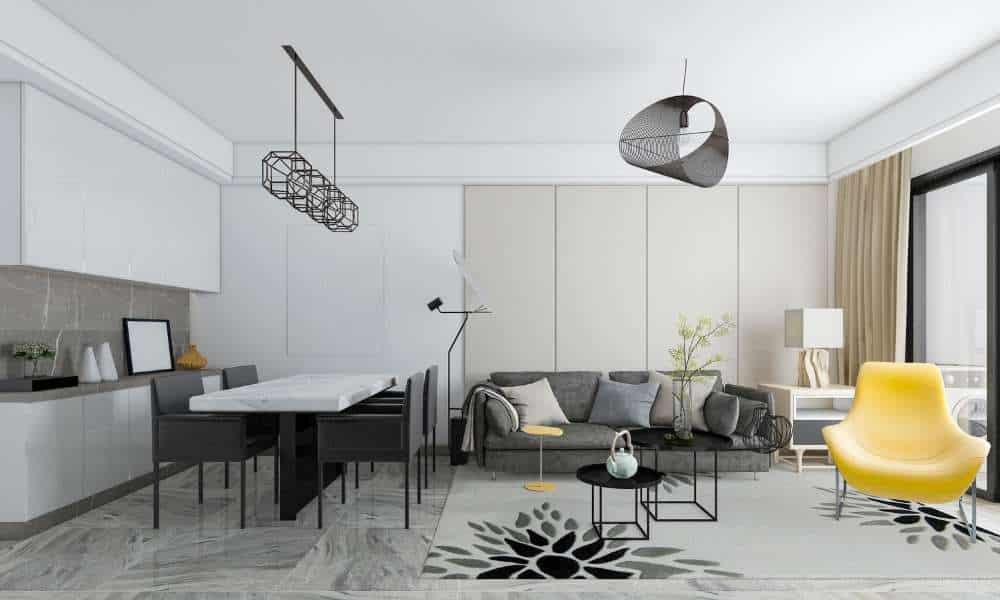A Decorate a Living Room Dining Room Combo, when decorated thoughtfully, can be both charming and functional. This versatile layout offers an open space that invites conversation, togetherness, and the flow of light, making your home feel more expansive. Creating harmony in a shared space may seem challenging, but with the right approach, it’s possible to bring cohesion to your living and dining areas, allowing each to complement the other while maintaining a sense of individuality. Let’s explore how to transform a dual-purpose room into a stylish and harmonious space that serves as the vibrant heart of your home.
1. Understanding the Basics of a Living Room Dining Room Combo
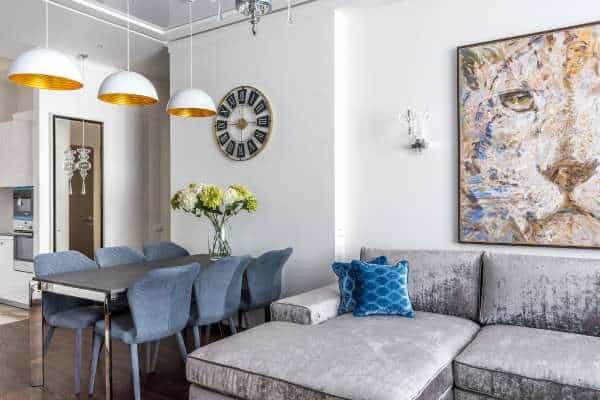
In modern interior design, open-plan living is highly sought after, and a combined living room and dining room exemplify this concept. By removing physical barriers, you create an inviting area that allows for both relaxation and dining without walls to define each space. The beauty of this setup lies in its flexibility. It opens the door to various layout possibilities, making it easy to entertain, relax, and dine within the same space. Embracing this type of layout means embracing creativity in design, where functional zones can coexist without compromising style or usability.
2. Choosing a Cohesive Color Palette

The secret to harmonizing a combined living and dining room is choosing a color palette that flows seamlessly between the two spaces. Start with neutral base colors like soft grays, creams, or warm beiges to create a tranquil canvas. From there, choose accent colors that complement each other, like shades of blue and green for a fresh look or earthy tones for a cozy vibe. Ensure that your chosen colors blend naturally from one space to the other, using accent pieces, such as throw pillows or area rugs, to subtly reinforce the palette. A unified color scheme brings an effortless cohesiveness, making the entire room feel like one well-curated space.
3. Dividing the Space Without Walls
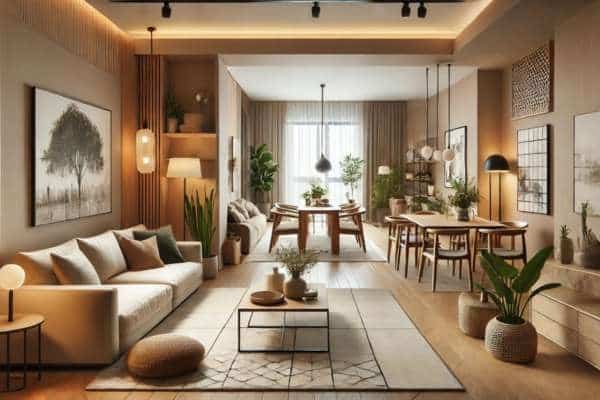
Creating distinct areas within a single room can be achieved without physical dividers. Rugs are an ideal tool for this; a cozy rug under the sofa and coffee table can establish the living space, while a contrasting yet complementary rug beneath the dining table grounds the dining area. Positioning furniture strategically also helps define each area. A sofa placed back-to-back with the dining table, for instance, subtly marks the boundary between spaces. To further enhance this effect, use open shelving units or plants as natural dividers that maintain the open flow yet give each area a clear identity.
4. Selecting Multi-Functional Furniture
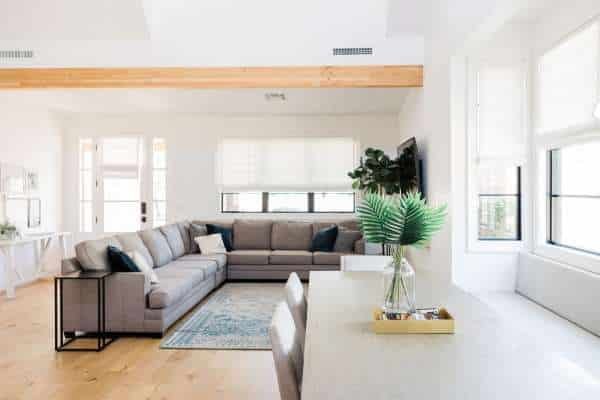
Multi-functional furniture is a lifesaver in dual-purpose spaces. Consider pieces that can serve more than one role, such as a storage ottoman that works as a coffee table or a bench that doubles as extra dining seating. For a more open feel, opt for furniture with a slim profile that doesn’t overpower the room. Choose a dining table that can expand when needed and chairs that can be easily moved to the living area for additional seating. These thoughtful choices ensure you have a functional layout without sacrificing space or comfort.
5. Creating a Seamless Flow Between Living and Dining Areas
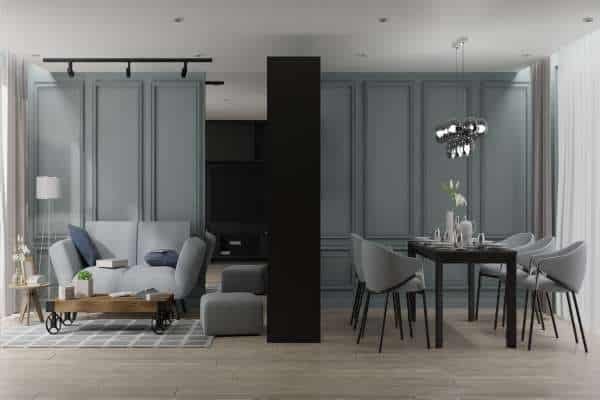
To make a combined space feel natural, consider how the layout encourages movement. Avoid placing furniture in a way that obstructs the flow from the living area to the dining space. Arrange seating to invite conversation and make the space feel open and welcoming. Additionally, choosing matching or complementary furniture styles—like a modern sofa with sleek dining chairs—creates a sense of visual continuity that naturally guides the eye through the room.
6. Lighting Ideas for a Living Room Dining Room Combo
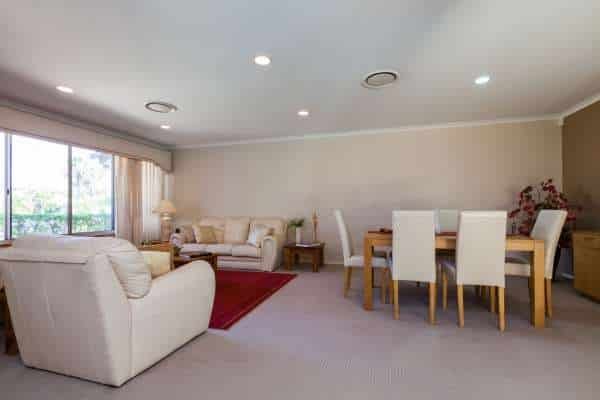
Lighting plays a critical role in defining different zones within a shared space. Consider a bold chandelier or pendant light above the dining table to create a focal point, while using floor or table lamps around the living area for softer, ambient light. This distinction in lighting helps separate the two areas subtly, setting the right mood for each. Decorate a Living Room Dining Room Combo. Layering your lighting—using overhead, task, and accent lights—will enhance the room’s depth and make it adaptable for both intimate dinners and cozy movie nights.
7. Incorporating Decor and Accessories
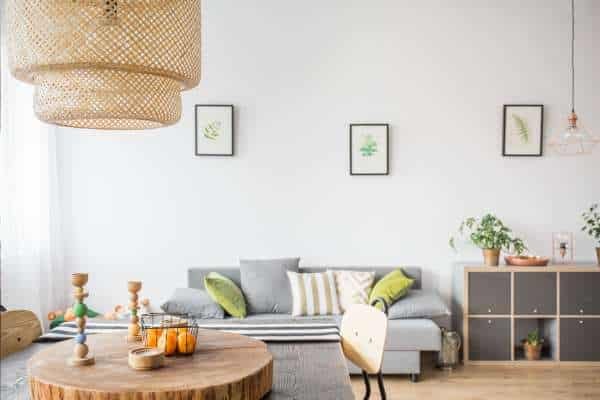
Accessories are where your personality can shine through, so select items that unify the space without creating clutter. Use similar frames for artwork across both areas or a cohesive collection of vases and sculptures that draw the eye. Mirrors can make the room appear larger and reflect light to keep the space bright. Pillows and throws in complementary colors can bridge the living and dining sections, while adding warmth and texture. Remember to keep surfaces clean and minimal to avoid overwhelming the room’s natural openness.
8. Making the Most of Wall Space
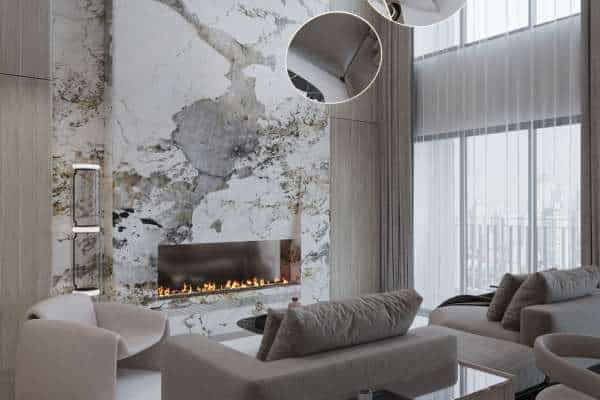
Walls offer a canvas for creating continuity across the living and dining areas. You might consider a unified theme in your wall decor, such as a gallery wall that extends across the two zones, or shelves that display books, plants, and curated decor pieces in both areas. A single statement art piece that spans both spaces also brings them together while adding character. Additionally, wall-mounted shelves can be used to create extra storage without crowding the room with furniture.
9. Adding Greenery to Your Living Room Dining Room Combo
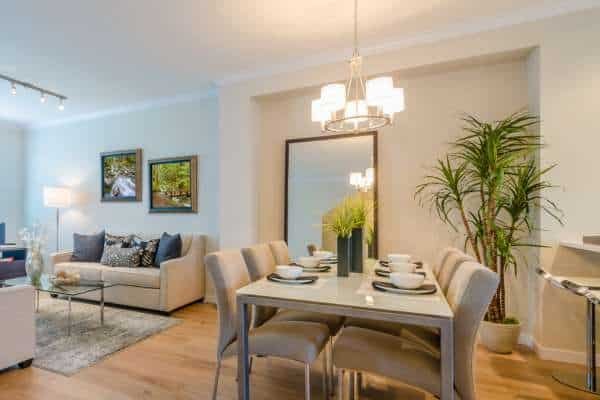
Plants are a wonderful way to breathe life into a room and bridge two spaces seamlessly. Place taller plants like fiddle leaf figs or indoor palms strategically to act as natural dividers, while smaller plants on tables and shelves add lush touches throughout the room. Choose a variety of plants that thrive indoors and don’t require excessive sunlight if your room doesn’t have large windows. Incorporating greenery not only enhances the room’s aesthetics but also fosters a sense of calm and tranquility.
10. Personalizing the Space to Reflect Your Style

A combined living and dining room should reflect your personality and tastes. Add personal touches through family photos, heirlooms, or unique decor that tells a story. Incorporate one or two statement pieces, like an antique dining table or a vintage rug, to give the space character. Mixing styles can add depth, such as pairing modern furniture with rustic decor or a traditional rug, creating a balanced blend that feels curated and inviting.
Conclusion
Creating a harmonious Decorate a Living Room Dining Room Combo is an art, but with thoughtful planning and creativity, it can become the most beloved space in your home. This combined area, balanced in design and function, becomes more than just a room—it’s where memories are made, meals are shared, and relaxation is embraced. As you settle into your beautifully decorated space, enjoy how each thoughtful touch reflects your style, making it a warm and welcoming sanctuary for family and friends alike.

